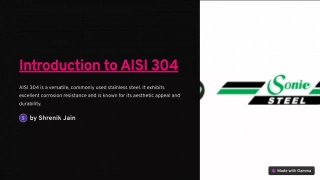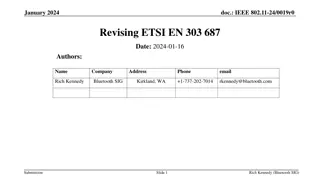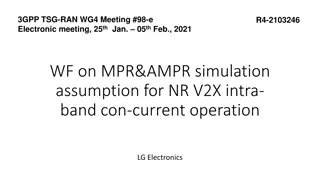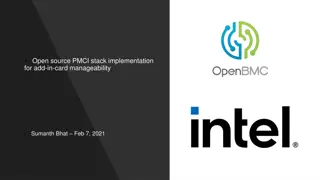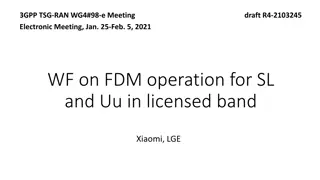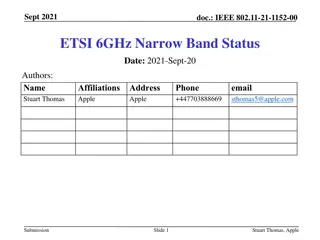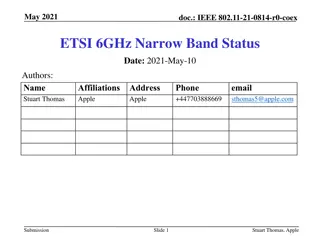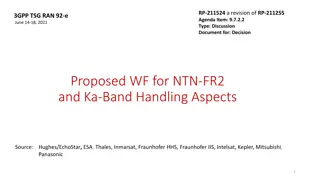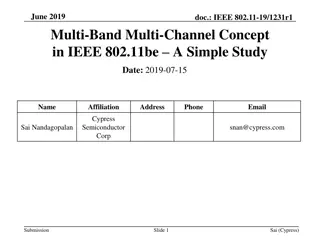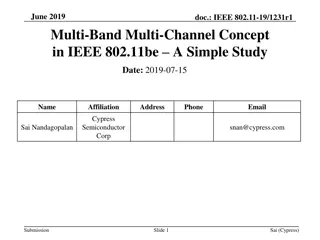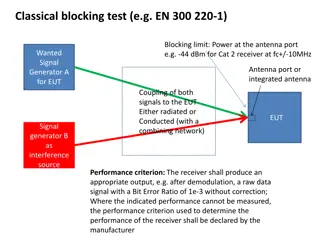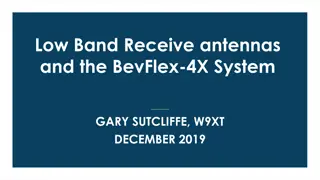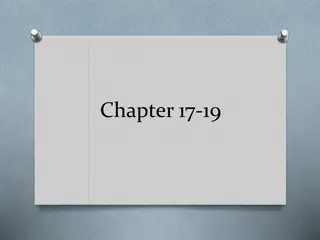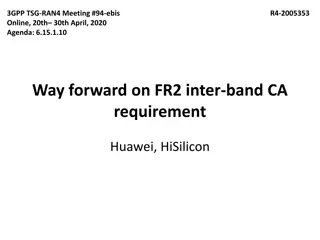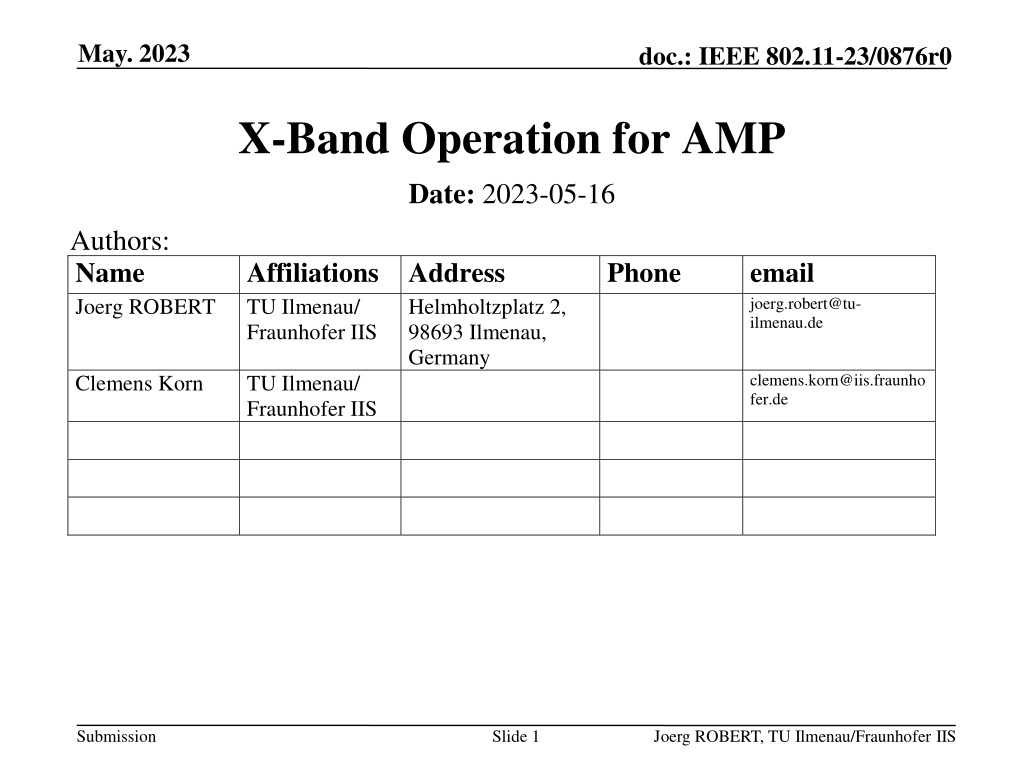
Innovative Cross-Band Approach for Full Duplex Operation in Smartphones
Explore a groundbreaking proposal for achieving full duplex operation with standard smartphone hardware using cross-band technology. This presentation delves into the motivation behind the proposal, addressing potential issues and offering solutions for improved efficiency in various use-case scenarios such as Smart Home, Smart Agriculture, Indoor Positioning, and Food Logistics. Discover how a bi-static approach can alleviate the challenges of full duplex operation in cost-sensitive devices.
Download Presentation

Please find below an Image/Link to download the presentation.
The content on the website is provided AS IS for your information and personal use only. It may not be sold, licensed, or shared on other websites without obtaining consent from the author. Download presentation by click this link. If you encounter any issues during the download, it is possible that the publisher has removed the file from their server.
E N D
Presentation Transcript
May. 2023 doc.: IEEE 802.11-23/0876r0 X-Band Operation for AMP Date: 2023-05-16 Authors: Name Joerg ROBERT Affiliations Address TU Ilmenau/ Fraunhofer IIS Phone email joerg.robert@tu- ilmenau.de Helmholtzplatz 2, 98693 Ilmenau, Germany Clemens Korn TU Ilmenau/ Fraunhofer IIS clemens.korn@iis.fraunho fer.de Submission Slide 1 Joerg ROBERT, TU Ilmenau/Fraunhofer IIS
May. 2023 doc.: IEEE 802.11-23/0876r0 Abstract This documents presents a proposal to achieve full duplex operation with typical smartphone hardware by using cross-band operation for the uplink and downlink. Submission Slide 2 Joerg ROBERT, TU Ilmenau/Fraunhofer IIS
May. 2023 doc.: IEEE 802.11-23/0876r0 Motivation The AMP TIG report in 11-23/436r0 includes some use-cases where the use of smartphones interrogators is quite useful Examples are use-cases 4 (Smart Home), 5 (Smart Agriculture), 6 (Indoor Positioning), 8 (Food Logistics) This presentation analyses the potential issues if classical backscatter approaches are used This presentation further makes a proposal to solve these problems using cross-band operation Submission Slide 3 Joerg ROBERT, TU Ilmenau/Fraunhofer IIS
May. 2023 doc.: IEEE 802.11-23/0876r0 Backscatter Full Duplex Issue fc=915MHz, PTX=36dBm PRX=PTX fc=915MHz f, PRX=-80dBm Passive Device Interrogator Backscatter modulation is full duplex with typically a small frequency offset f < 1MHz [1] Full duplex with high deltas between PTX and PRX in the very same device is very challenging [2] Challenging in tiny and cost-sensitive smartphones Submission Slide 4 Joerg ROBERT, TU Ilmenau/Fraunhofer IIS
May. 2023 doc.: IEEE 802.11-23/0876r0 Solution: Bi-Static Approach fc=xMHz, PTX=? fc=xMHz f, PRX=-80dBm Passive Device Energizer/ Ambient Sign. PRX<<PTX Receiver Bi-static configuration reduces full duplex issue due to separation of energizer and receiver What is the energizer / ambient signal? Submission Slide 5 Joerg ROBERT, TU Ilmenau/Fraunhofer IIS
May. 2023 doc.: IEEE 802.11-23/0876r0 Ambient Signal / Energizer Classical energy-harvesting may not be available for the aforementioned use-cases (dark environments, no temperature difference, etc.) Dimension of super-cap capacitor may be impractical for many applications Reliable energy source only from the RF field Strong RF fields are required to power the devices What are the sources for these strong RF fields in the use-cases? I do not have any clever idea Submission Slide 6 Joerg ROBERT, TU Ilmenau/Fraunhofer IIS
May. 2023 doc.: IEEE 802.11-23/0876r0 Intermediate Summary Real full-duplex may be difficult to achieve in smartphones Bi-static approaches are impractical in some of the use- cases mentioned in the AMP TIG report 11-23/436r0 Energy harvesting may not be available or impractical Dimensions of super-cap capacitors may be too large We have to have RF powering, but full-duplex is challenging Submission Slide 7 Joerg ROBERT, TU Ilmenau/Fraunhofer IIS
May. 2023 doc.: IEEE 802.11-23/0876r0 Proposal: Cross-Band Operation ( I / II ) fc=868 or 915MHz fc=2.4GHz Passive Device Interrogator Use sub-GHz for the downlink and the energy transfer Use 2.4GHz for the uplink Continuous power transfer during communication, but without full-duplex issue! Submission Slide 8 Joerg ROBERT, TU Ilmenau/Fraunhofer IIS
May. 2023 doc.: IEEE 802.11-23/0876r0 Proposal: Cross-Band Operation ( II / II ) Downlink: Sub-GHz OOK-Modulated Wake-Up like sequence (e.g. extended 802.11ba), Also used for energy supply The sub-GHz ISM/SRD frequencies are already supported by almost all smartphones for cellular communication due to different frequency bands around the world The downlink RX may support different frequency bands (e.g. like in UHD RFID) Uplink: DSSS-Modulated single-carrier waveform (e.g. 802.11b) with high rate Power-efficient generation Low cost amplifiers Submission Slide 9 Joerg ROBERT, TU Ilmenau/Fraunhofer IIS
May. 2023 doc.: IEEE 802.11-23/0876r0 Link Budget Calculation ( I / II ) Detailed Analyses in [3] PC: Transmit power of energizer GC: Antenna gain of TX antenna of energizer Gdevice: Antenna gain of passive device PRX,deivce: RX power of passive device Example for 915 MHz dowlink, 2.4GHz downlink PC=27dBm, GC=5dBi, Gdevice=0dBi, 10m distance Submission Slide 10 Joerg ROBERT, TU Ilmenau/Fraunhofer IIS
May. 2023 doc.: IEEE 802.11-23/0876r0 Link Budget Calculation ( II / II ) Downlink (TX smartphone) Transmit Power 27dBm (500mW) Transmitter Ant. Gain. 5dBi Receiver Ant. Gain 0dBi Path Loss for 10m 52dB (915MHz) RX Power at Receiver -20dBm All parameters are supported by classical smartphones Even tiny transmit powers are sufficient for an error-free decoding of 802.11ba and 802.11b The sub-GHz band is more suited for the downlink loss for improved harvesting, higher transmit powers due to frequency regulation Optimize the system for sub-GHz, 2.4 GHz is relaxed Uplink (TX passive device) -25dBm (0.003mW) 0dBi 5dBi 60dB (2.4GHz) -80 dBm works for .11b lower path Submission Slide 11 Joerg ROBERT, TU Ilmenau/Fraunhofer IIS
May. 2023 doc.: IEEE 802.11-23/0876r0 Power Analyses of Passive X-Band Device OOK (Wake-Up) receiver offers very power efficient operation with < 10 A [4] DSSS is constant envelope and transmit times are very short (e.g. 1ms) can be stored on very small capacitor Frequency generation for 2.4 GHz uplink has to meet channel accuracy requirements, BUT Typical crystal oscillators require multiple mA and have a long start-up time in the ms range [5, Tab.2] Problem is the clock generation Submission Slide 12 Joerg ROBERT, TU Ilmenau/Fraunhofer IIS
May. 2023 doc.: IEEE 802.11-23/0876r0 Problem with the Clock Generation The use of crystal oscillators is too expensive Current consumption too high Long start-up time Additional size and complexity Potential solution: Use of calibrated RC oscillators Very low power consumption, e.g. 190nW [6] Calibration of the RC oscillator using the sub-GHz downlink frequency Submission Slide 13 Joerg ROBERT, TU Ilmenau/Fraunhofer IIS
May. 2023 doc.: IEEE 802.11-23/0876r0 Possible X-Band AMP Device Structure Downlink (sub-GHz) Uplink (2.4 GHz) Power Power Harvesting Calibration Clock Frequency- Estimation PLL Downlink Decoder (e.g. OOK) Downlink Decoder (e.g. OOK) P Submission Slide 14 Joerg ROBERT, TU Ilmenau/Fraunhofer IIS
May. 2023 doc.: IEEE 802.11-23/0876r0 What are Required Extension to the PHY? System can work with almost state-of-the-art smartphones Fits perfectly into eco-system: IEEE 802.11ba used as basis for the downlink High rate single-carrier uplink waveform Only missing aspect for the PHY is the extension of the signaling for the RC-calibration Submission Slide 15 Joerg ROBERT, TU Ilmenau/Fraunhofer IIS
May. 2023 doc.: IEEE 802.11-23/0876r0 Summary Full duplex may be problematic if smartphones are used as interrogators Bi-static operation may be difficult in many use-cases Using Cross-Band operation offers relaxed full duplex, which can be easiliy supported by smartphones The problem of the power consumption can be solved by means of RC oscillators Submission Slide 16 Joerg ROBERT, TU Ilmenau/Fraunhofer IIS
May. 2023 doc.: IEEE 802.11-23/0876r0 Literature [1] K. Finkenzeller: RFID handbook: fundamentals and applications in contactless smart cards, radio frequency identification and near-field communication , John Wiley & Sons; 2010 [2] Full-Duplex TIG Report, 11-18/498r8 [3] C. Korn, J. Robert, T. Dr ger, Theoretical Limits of Backscatter Communications , arxiv pre- print, https://arxiv.org/abs/2302.13958 [4] J. Robert, T. Lindner and H. Milosiu, "Sub 10 W wake-up-receiver based indoor/outdoor asset tracking system," 2015 IEEE 20th Conference on Emerging Technologies & Factory Automation (ETFA), Luxembourg, 2015 [5] D. Griffith, F. D lger, G. Feygin, A. N. Mohieldin and P. Vallur, "A 65nm CMOS DCXO system for generating 38.4MHz and a real time clock from a single crystal in 0.09mm2," 2010 IEEE Radio Frequency Integrated Circuits Symposium, Anaheim, CA, USA, 2010, pp. 321-324 [6] D. Griffith, P. T. R ine, J. Murdock and R. Smith, "17.8 A 190nW 33kHz RC oscillator with 0.21% temperature stability and 4ppm long-term stability," 2014 IEEE International Solid- State Circuits Conference Digest of Technical Papers (ISSCC), San Francisco, CA, USA, 2014 Submission Slide 17 Joerg ROBERT, TU Ilmenau/Fraunhofer IIS


